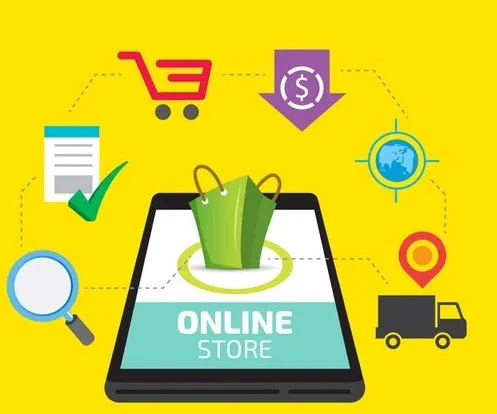

Customer Onboarding: Bring Your Offline Customers Online!
It has become increasingly necessary for retailers to shift their focus to ecommerce. Today's customers are digitally advanced and demand an omnichannel shopping experience. Customer Onboarding can make the move smooth and easy for them.

The customers are always online. They are bouncing back and forth between offline and online channels. This trend is slowly changing the way retailers will conduct business now and in later years. Customers today have become increasingly tech-savvy. Shopping for them is not limited to a single device anymore, they are multi-channel users, who prefer making purchases on the go.
With the rapid rise of internet penetration and ease of purchasing, customers are leaning towards e-commerce even more. Yet, its completely understandable, that when you a traditional retailer, who has been selling in a brick-and-mortar store needs to make the move online, the transition can be challenging for you and your customers as well. You might worry about the positive and negative impacts the change will bring and also the hurdles faced by shoppers in adopting the new method.
But wait! Before we start, let’s first understand what it takes to convince your customers to move online and why it is important to educate your customer about your B2C e-commerce platform.
In technical terms, the process of introducing a new business model to your customers is known as Customer Onboarding.
It is a systematic way of encouraging your customers to move to your B2C e-commerce platform. It is to show your customers around your platform, familiarize them with the functions, key processes, and content.
Remember, you only have one chance to make a good first impression. Customer onboarding paves the way for your future relationship with your customers, so, tell them what your service provides and address any questions. Done correctly, customer onboarding can increase customer loyalty and profitability.
“The client onboarding period is the honeymoon phase of the B2B customer relationship,” says Allison Bennett, chief marketing officer of business at JP Morgan Chase. “Often so much of a company’s investment is in winning the customer, but it is just as important to onboard well and build a long-term relationship.”
I’ve come up with a few ideas on how you can focus on convincing customers to use your e-commerce website and to make the shift smooth, keeping your customers engaged in your e-commerce platform.
Target Core Customers First

Image courtesy: Freepik
The first step in getting your customers online is knowing which of them will be most receptive to the change and willing to hop on the e-commerce bandwagon immediately.
- Segregate your core customers and approach them first
- Understand their needs, what they are looking for as part of their customer experience and build confidence for your e-commerce site
While developing the onboarding process, keep the customer at the forefront. Ask yourself “what does my customer need for succeeding, to convert him into a returning customer?”
What You Don’t Know… Ask!

Image courtesy: Freepik
This is something you can do while building your e-commerce platform itself. First, understand what are the parameters on the basis of which your customers define success. Ask the users about their purpose of using the site, what they are trying to achieve with the products, etc. Get ideas from them about customer experiences, user interface, product ideas and more.
Let them Know you are Online!

Image courtesy: Freepik
You have your e-commerce site ready and customers sorted. Now is the time to inform them you have gone digital! It is essential to keep customers updated about your move online. According to a report by Harvard Business Review, about 51% of executives stated lack of communication as a cause for failure to onboard new customers.
- Inform- Communicate to them about this change via emails and calls addressed to each customer for a more personalized touch. Tell them about the reason for the change and how it will benefit them. You can also add a small note on your invoices or emails providing them the link to your B2B platform and telling them how to access it.
- Pre-onboarding process- it is important for your customers to onboard properly. For some long-term customers, not very tech-savvy, it could be that they might be feeling dubious about this change. To mitigate this situation, you need to provide a clear overview of the breakdown of the process. This should cover everything right from how they can log in to how to maneuver around the site.
- Demos- demos are an excellent way to teach your customers about how they can use your B2B portal. Tutorials and videos can explain the entire process to them clearly. Demos also give you the opportunity to show each customer something specifically useful to them. Don't forget, you also need to train your staff and sales reps properly so they can assist shoppers while using your site.
- Test and verify- after giving your consumers in-depth information on your e-commerce portal, you need to make sure whether they’re ready or not. Test their comfort level in using your website by giving them a trial run. This way they’ll get a hands-on experience of using your website and understand what works and does not work for them
- Prepare for feedback- Feedback is very important to understand how your customers are feeling about using your B2B portal. Have a dialogue with them and discuss with them what they like, what they didn’t like, what they liked about your competitor's website. You can create a questionnaire for them to fill up asking questions about their experience of working with the site. With the help of this insight, you can get a lucid idea of your customers’ demands and expectations.
Work on your Website

Image courtesy: Freepik
The best way to make a positive impact on your customers’ experience is by putting work on your website itself. The landing page of your e-commerce site should establish the theme and idea behind your business. Display excellent quality images of products complemented by concise, well-written product descriptions. Product videos are a hot selling factor these days. During this process of ornamenting your website, think like a customer yourself. Consider all those factors that you look for when you are shopping online. Create impactful, detailed product catalogs that are informative and serve as great marketing tools at the same time. Include dimensions, images from multiple angles, on the product details page so the buyer can visualize their purchase easily. Choose a website layout that is intuitive, user-friendly and attractive to customers.
Keep your Customer Returning For More
1551939581892.jpg?fm=png&auto=format)
Image courtesy: Freepik
After successfully bringing your customer online, create a communication plan to encourage the customer to use your e-commerce platform. At this point, you do not want to let the customer out of your sight, per se.
Keep up the communication throughout your relationship with the customer. Thus, any form of communication should be highly personal and relevant to them.
Make it Worth It!

Image courtesy: Freepik
Despite so many efforts, you will still notice a few of your customers will find it hard to let go of their offline ways. So what can you do to retain customers?
You could lure them to use your B2B e-commerce site by giving them a small privilege, or incentives (a little bribe is ok sometimes). Some ideas could be free-shipping for a month, discounts on orders beyond the minimum order quantity, free samples, gift vouchers and so much more.
Finally…
To sum up the discussion, I would say, customer onboarding is an extremely effective way to scale your e-commerce business and forge a solid relationship with your customers. The key to success is making your website the USP of your entire operations. It should be easy to use, complete with an interactive design, high-quality product images, and descriptions and compelling call-to-action buttons.
Moving your business online is a progressive move considering the meteoric rise in the popularity of e-commerce.




![Top 10 Cheap Indian Press Release Distribution Services [Updated]](https://images.yourstory.com/cs/1/b3c72b9bab5e11e88691f70342131e20/LOGO-DESIGN-PR-INDIA-WIRE-03-1595693999405.png?mode=crop&crop=faces&ar=1%3A1&format=auto&w=1920&q=75)
